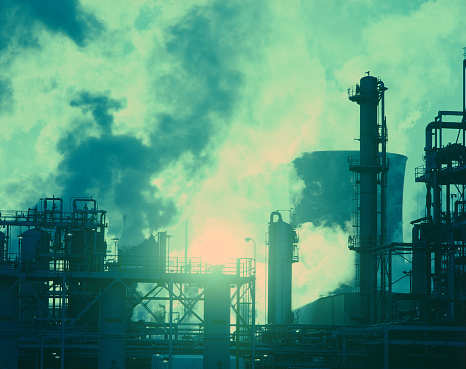Significant credit risks arise for oil & gas industry from carbon transition: Moody's
Other policies that pose material challenges for the oil and gas sector include fuel efficiency standards for the auto sector, global carbon pricing initiatives and significant renewable electricity generation targets in many jurisdictions. New Delhi: The global oil and natural gas industry faces significant credit risk due to carbon-related global policy initiatives, changing consumer preferences and disruptive technological advancement, Moody's Investors Service said in a new report.
New Delhi: The global oil and natural gas industry faces significant credit risk due to carbon-related global policy initiatives, changing consumer preferences and disruptive technological advancement, Moody's Investors Service said in a new report."Carbon transition risk poses a substantial threat to the oil and gas industry in that carbon is the industry's product, not merely an undesirable byproduct," says John Thieroff, a vice-president at Moody's. "With clear commitments in the Paris Agreement to reduce emissions, it is inevitable that policy implementation will
materially impact the sector as it is one of the most significant sources of emissions."
The credit rating agency uses a baseline scenario based on emission reductions agreed to in the Paris Agreement for considering the credit implications of carbon transition risk. The ratings agency also said while the future energy and environmental policies of the United States are unclear at this time, it does not believe that the pathway to lower global emissions will be derailed in the coming decade.
Other policies that pose material challenges for the oil and gas sector include fuel efficiency standards for the auto sector, global carbon pricing initiatives and significant renewable electricity generation targets in many jurisdictions.
Demand for oil and gas is also threatened by advances in automotive and energy storage technology, as well as the development of clean fuels and renewable energy.
Such technologies are still in the early stages of adoption, but consumer preferences have begun to shift, with increased interest in alternative fuel passenger
vehicles and clean electricity.
Natural gas is better positioned than oil in the baseline scenario to stave off demand destruction given its lower CO2 emissions than coal, a primary competing fuel in electricity generation. In a declining demand environment, the potential for oversupply augments the potential for low commodity prices, increased pricing
volatility and weaker profitability and cash flow for oil and gas companies.
"High cost, long-lead-time projects could be at risk of becoming stranded, causing significant challenges for long-range strategic planning and investment for companies involved in large-scale frontier exploration and development projects," Thieroff says.
The report "Environmental Risks: Oil and Gas Industry Faces Significant Credit Risks from Carbon Transition," says the ability to respond to these risks will vary for oil and gas companies. When assessing the relative exposure of individual oil and gas companies, Moody's says it will consider a company's profitability and
leverage, its asset mix and strategy and its ability to adjust its financial profile. http://energy.economictimes.indiatimes.com/news/oil-and-gas/significant-credit-risks-arise-for-oil-gas-industry-from-carbon-transition-moodys/58395415
No hay comentarios.:
Publicar un comentario